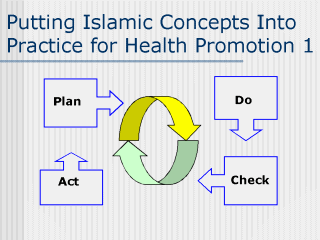| front |1 |2 |3 |4 |5 |6 |7 |8 |9 |10 |11 |12 |13 |14 |15 |16 |17 |18 |19 |20 |21 |22 |23 |24 |25 |26 |review |
 |
There is a
general consensus that genetics, environment and lifestyle form the basic factors that
determine the health of an individual (Kemm & Close, 1995; Naidoo and Wills, 2000).
Health promotion strategies try to influence these determinants as much as possible to
enhance health. As these determinants are part of various fields of sciences, the health
promotion concept can be said to have gathered several fields of studies under one
umbrella (Bunton & Macdonald, 1992; Kemm & Close, 1995; Green & Kreuter, 1999;
Naidoo and Wills, 2000). In 1986 WHO, in the first conference held on health promotion,
declared one of the most comprehensive definitions of health promotion “the process
of enabling people to increase control over, and to improve, their health”. Since
then much has been written on health promotion and the various ways of designing, planning
and implementing health promotion strategies. Reference: Bunton, R. & Macdonald, G. (1992). Health Promotion: Disciplines and diversity. London. Routledge. Green W. L. & Kreuter W. M. (1999). Health Promotion Planning: An Educational and Ecological Approach. 3rd ed. Mountain View. Mayfield Publishing Company. Kemm, J. & Close, A. (1995). Health Promotion: Theory and Practice. London. Macmillan Press LTD. Naidoo, J. & Wills, J. (2000). Health Promotion Foundations for Practice. 2nd ed. Bailliere Tindal. Harcourt Publishers Limited. World Health Organization. (1986). Ottawa Charter for health promotion. Geneva. WHO. |
| front |1 |2 |3 |4 |5 |6 |7 |8 |9 |10 |11 |12 |13 |14 |15 |16 |17 |18 |19 |20 |21 |22 |23 |24 |25 |26 |review |